History of Branson's Lake Taneycomo
This History of Branson's Lake Taneycomo
Branson is home to three stunning lakes: Table Rock Lake, Bull Shoals Lake, and Lake Taneycomo. With its calm waters, the beautiful Lake Taneycomo offers more water recreation opportunities for individuals of all ages, including boating, fishing, swimming, and even scuba diving.
This artificial lake in Taney County was created from a segment of the White River. The name of the river comes from the county it is in. Water sports enthusiasts constantly come to Lake Taneycomo for more exhilarating water activities, such as a fantastic adventure ride on a jetboat in Branson.
When the White River was obstructed by the Powersite Dam in Forsyth, Missouri, in 1913, Lake Taneycomo was created. From 1913 to 1958, it was a lake with warm water. In the 1920s and 1930s, tourists started to swarm the lake and the nearby towns of Branson and Rockaway Beach.
Visitors were drawn to the stunning and crystal-clear waters of Lake Taneycomo for activities like water skiing, boating, fishing, sunning, and swimming. The lakeside communities had restaurants, lodging, and amusement centers, including skee ball and bumper cars.
After the Table Rock Dam was built in 1958, Lake Taneycomo's water source changed. The White River's flowing waters transformed Table Rock Lake's bottom tailwater into Lake Taneycomo by pouring from the dam overflow.
The deep tailwaters of Table Rock Lake are released via the dam into Lake Taneycomo. The cold water of Lake Taneycomo made swimming and other water activities challenging. Rockaway Beach saw a decline in visitors as Branson and Table Rock Lake saw an increase.
Up until 1958, the White River was a lake with warm water. After the Table Rock Dam was built in August 1958, the water for Lake Taneycomo originates from the lake's bottom. The lake's temperature has remained in the mid-50s ever since.
As you might anticipate, this change has reduced the number of people swimming near the Rockaway Trout Fishing on Lake Taneycomo Beach region. Many tourists who planned to swim in the lake instead chose to partake in other activities like an exciting adventure ride on a jetboat in Branson. Put, swimming in a chilly lake was not enticing.
Both lake and river characteristics can be seen in Lake Taneycomo. Wading and bank trout fishing is possible in the shallow cooler water near the Table Rock Dam, which has an average temperature of 48 degrees Fahrenheit (9 degrees Celsius) and resembles a river.
The average temperature of Lake Taneycomo climbs near the Powersite Dam in Forsyth, and the lake's depth exceeds 50 feet (15 meters). When Table Rock Dam produces electricity, the river's current is quite strong over its whole length, the water cools, and it turns into an intense, swift-moving river. The water's depth, temperature, and speed depend on how many generators are being used to produce energy at Table Rock Dam.
Because of the frigid water at Lake Taneycomo, anglers quickly learned that the lake had become a top spot for trout fishing. Whether you want to fly fish or use other techniques, finding a better location to catch trout will take a lot of work.
Following the completion of the Shepherd of the Hills Fish Hatchery in 1957, Lake Taneycomo was transformed into one of the most popular locations for year-round trout fishing. At any time of year, finding no fishermen on the lake is unusual. Lake Taneycomo combines the most significant aspects of rivers and lakes, making it the perfect location for boating, sightseeing, fishing, hiking, and other water sports.
Although Lake Taneycomo is well-known for its trout fishing, it also offers a range of leisure activities, including hiking, sightseeing, hunting, fishing, swimming, boating, and water skiing. The restaurants, hotels, shops, and performances in the Branson region are accessible to visitors to Lake Taneycomo.
After spending significant time in Branson Landing, travelers who want to extend their aquatic adventure frequently head to the lake.
Although tourism at Lake Taneycomo has fallen significantly, fishermen discovered that the lake's cold water made it one of the best trout fishing lakes in the country.
In 1957, the Missouri Department of Conservation built the Shepherd of the Hills Trout Hatchery. All types of trout fishing, including fly fishing, artificial bait, and live bait fishing, are permitted year-round at Lake Taneycomo.
Visitors who want to see the natural beauty of the lakefront often travel to Lake Taneycomo. Visitors to Lake Taneycomo come to enjoy a meal at a floating restaurant, a stroll along the promenade, or a show at Branson Landing Promenade featuring stunning fountains.
People commonly travel to the lake to shop and eat at the numerous excellent restaurants at Branson Landing. Branson Jet Boat from Branson Landing also offers a regular river tour of this lake. Many travels to Lake Taneycomo to escape the hectic city life, find tranquility, and enjoy the lovely surroundings.
Lake Taneycomo is known as the most popular tourist destination in the region as it offers many fantastic water activities that every thrill-seeker wants to enjoy, including the newest water adventure ride on a jetboat in Branson.

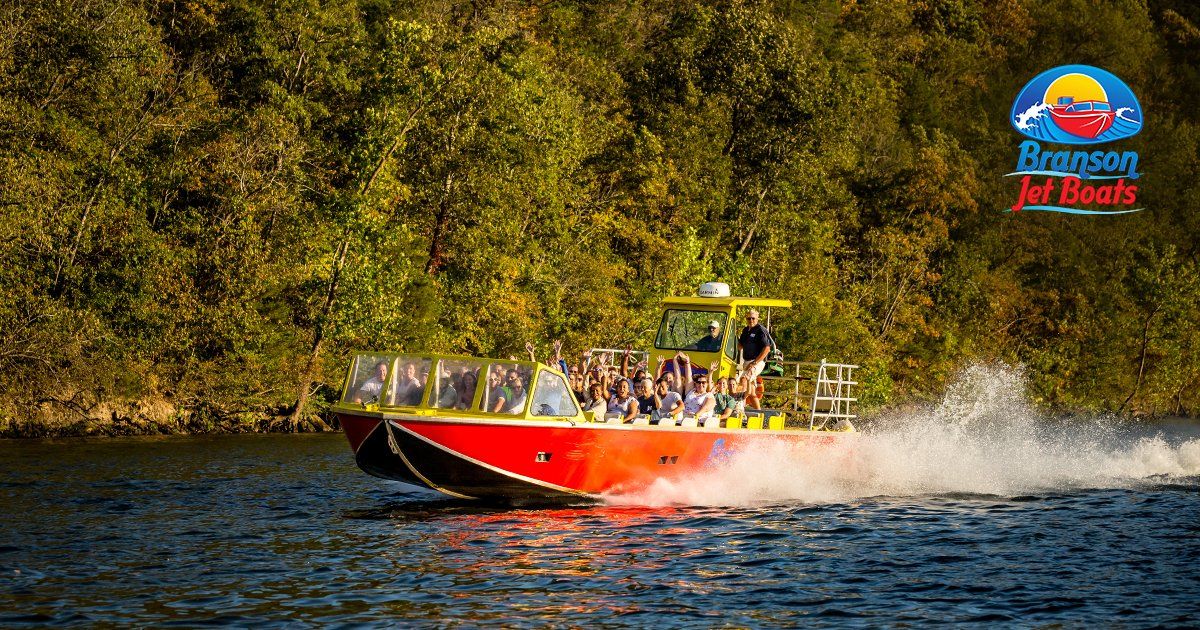
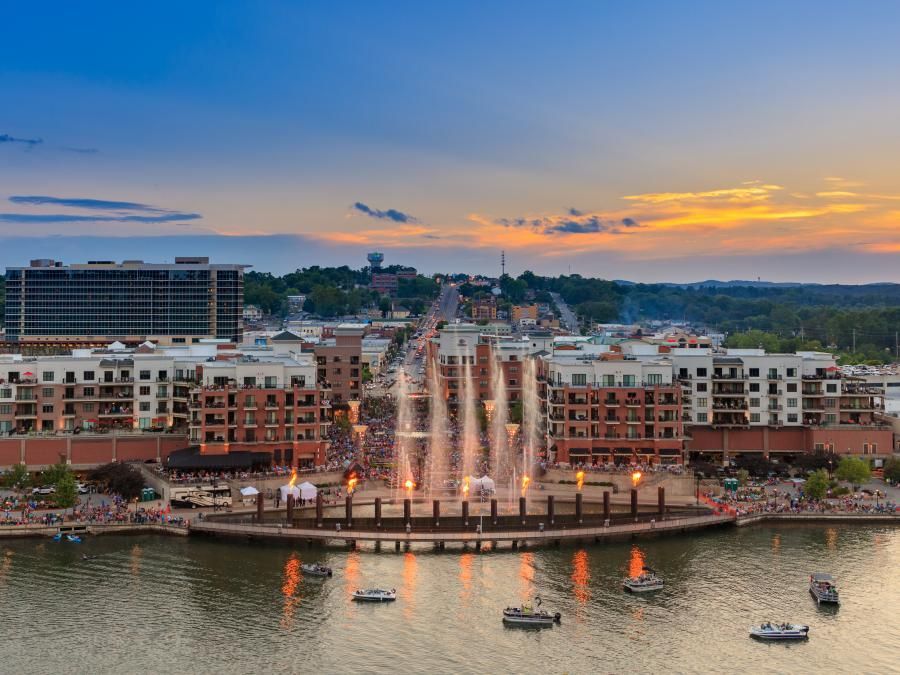
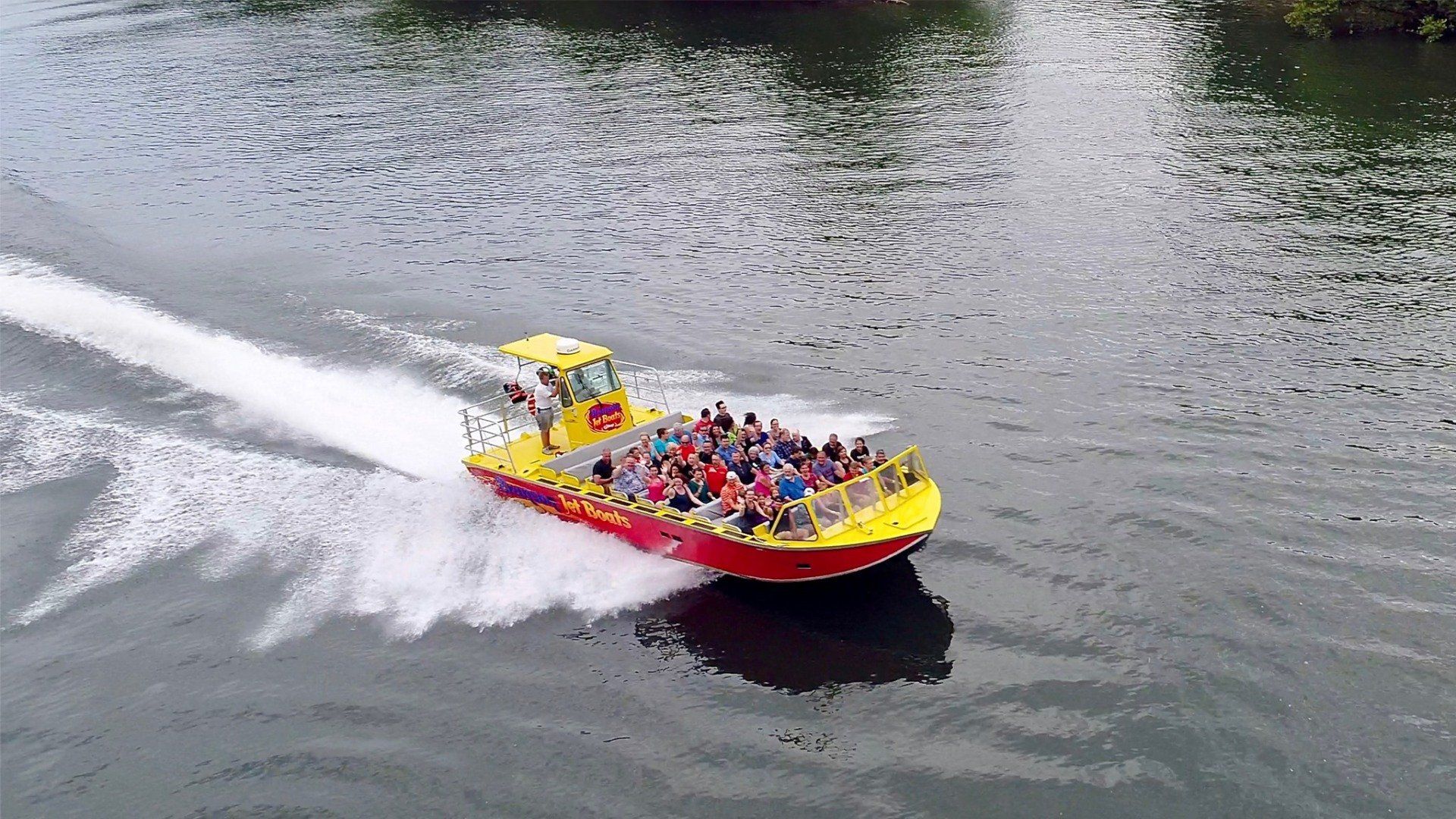
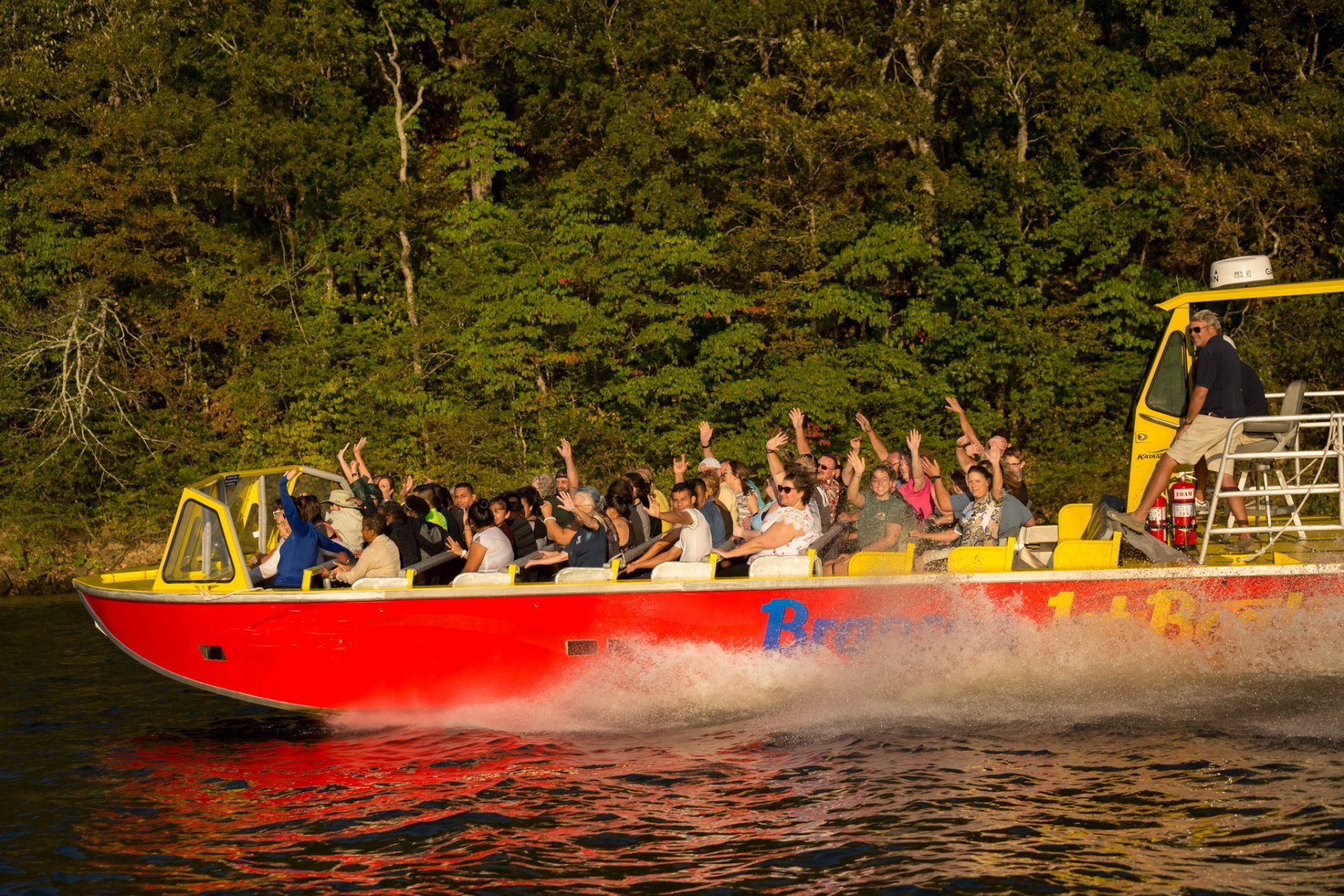


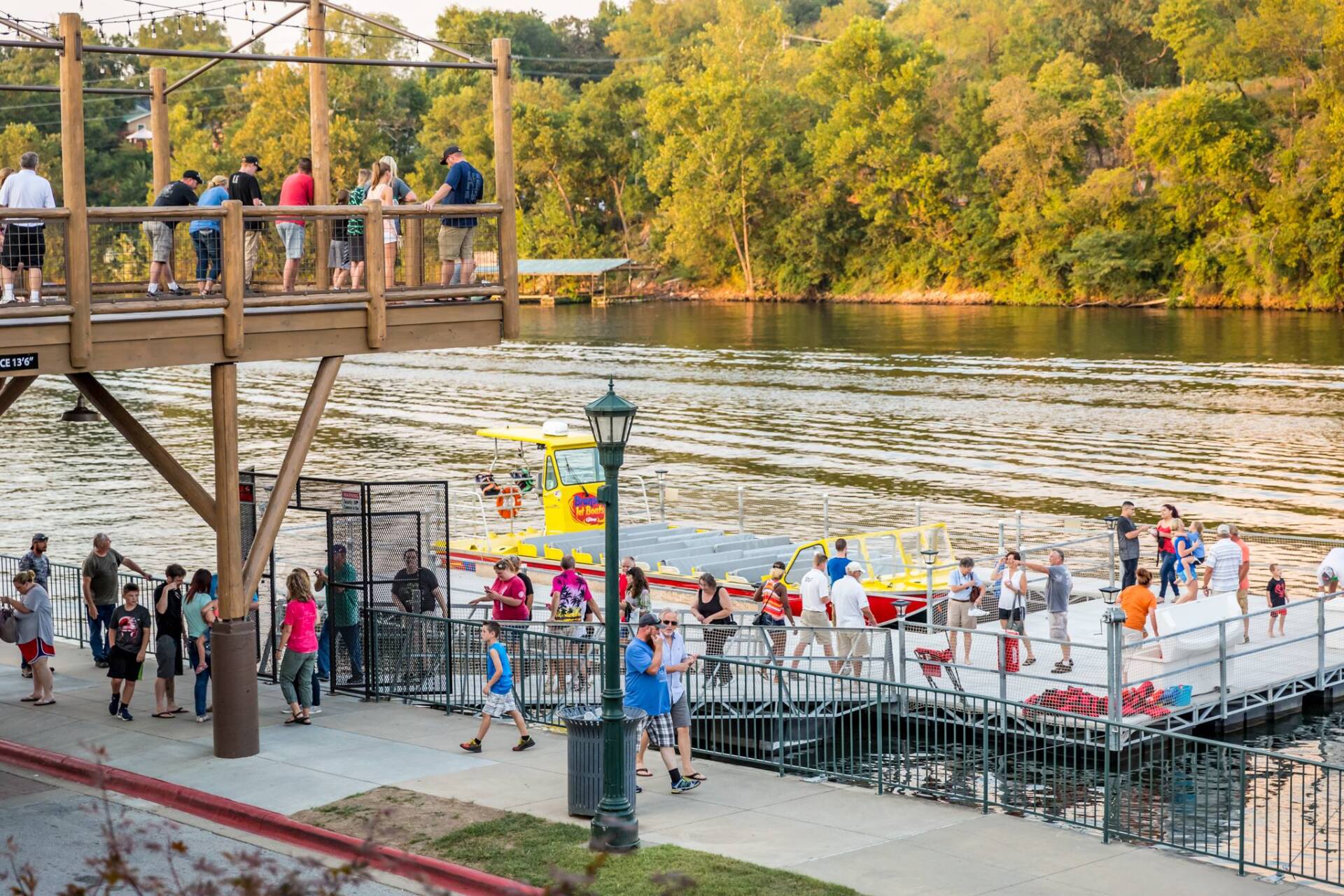






 by
by